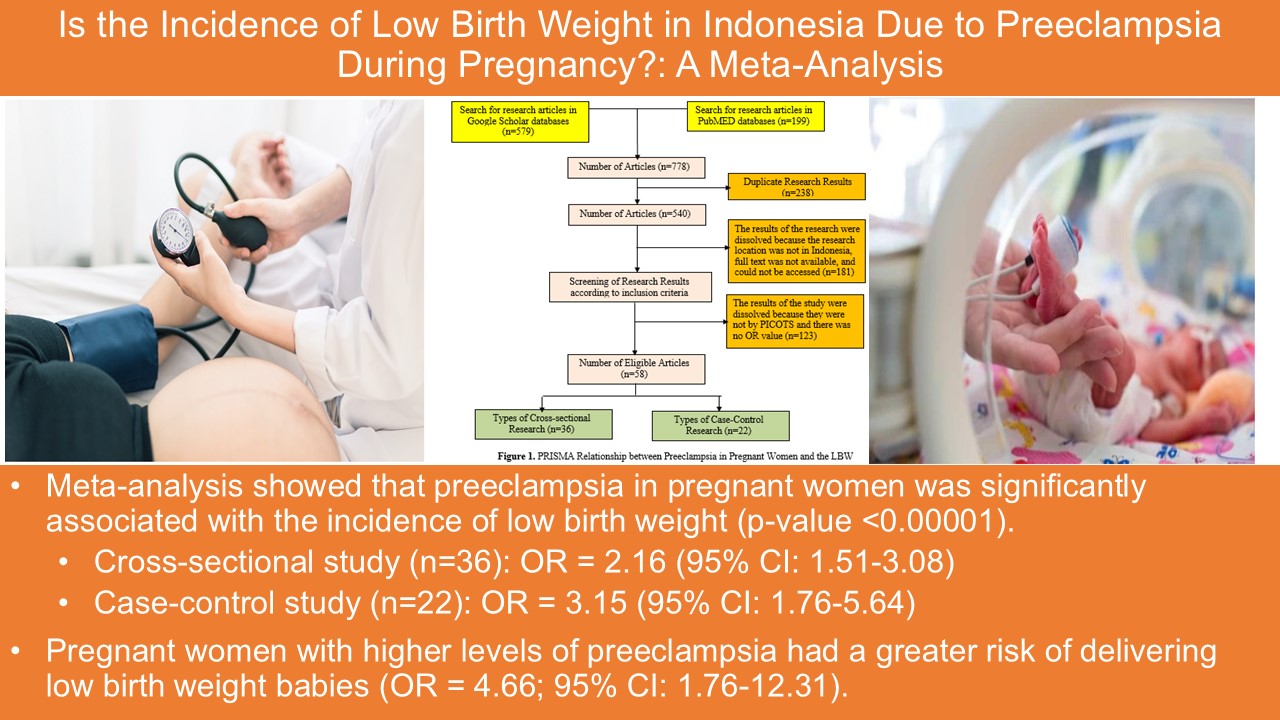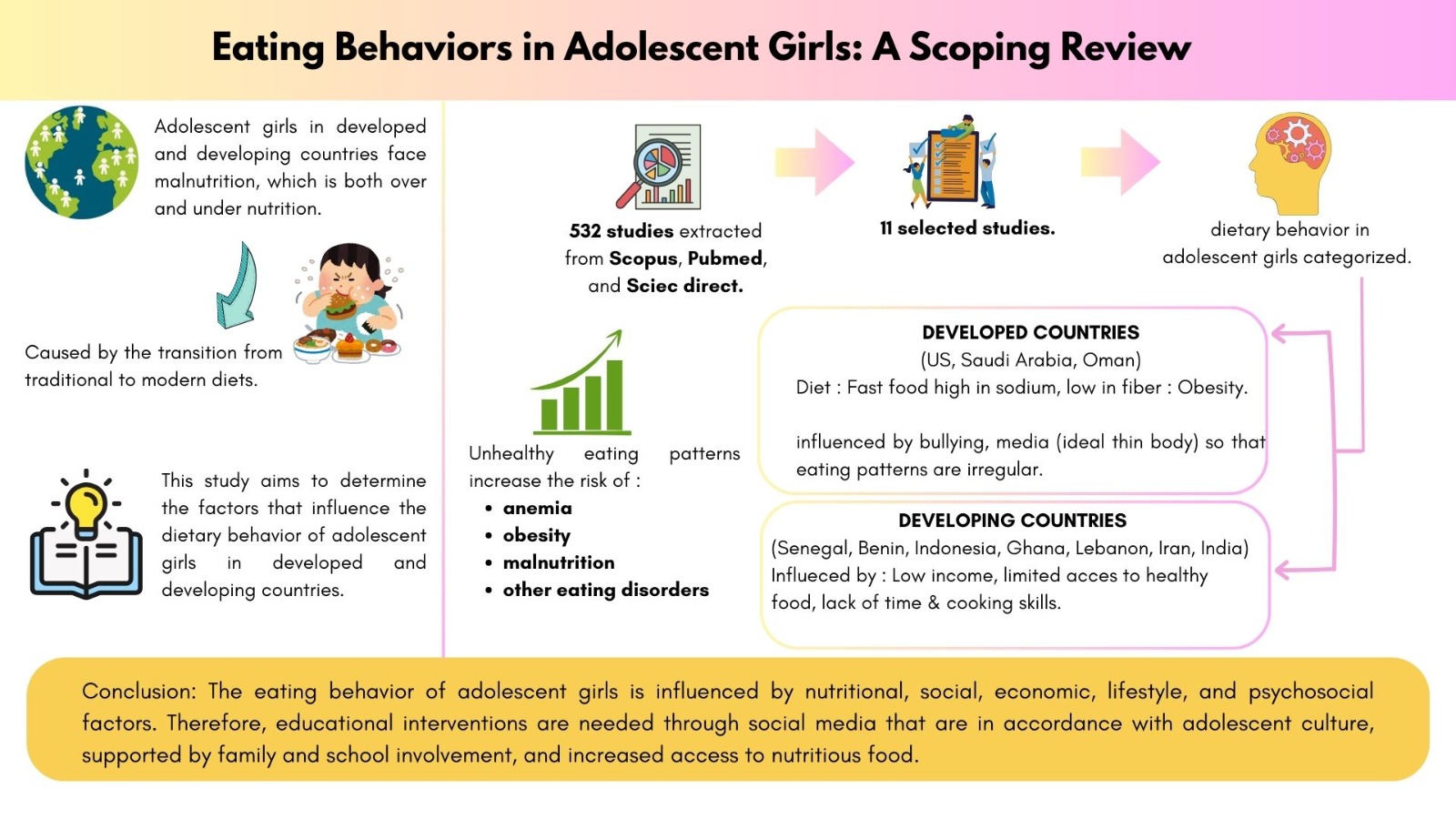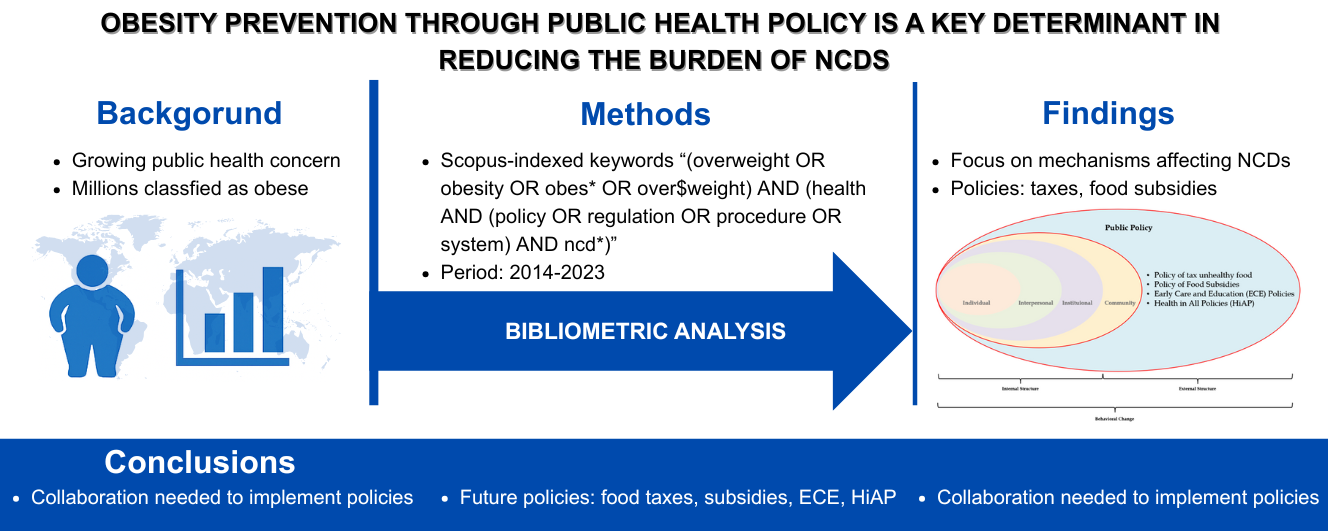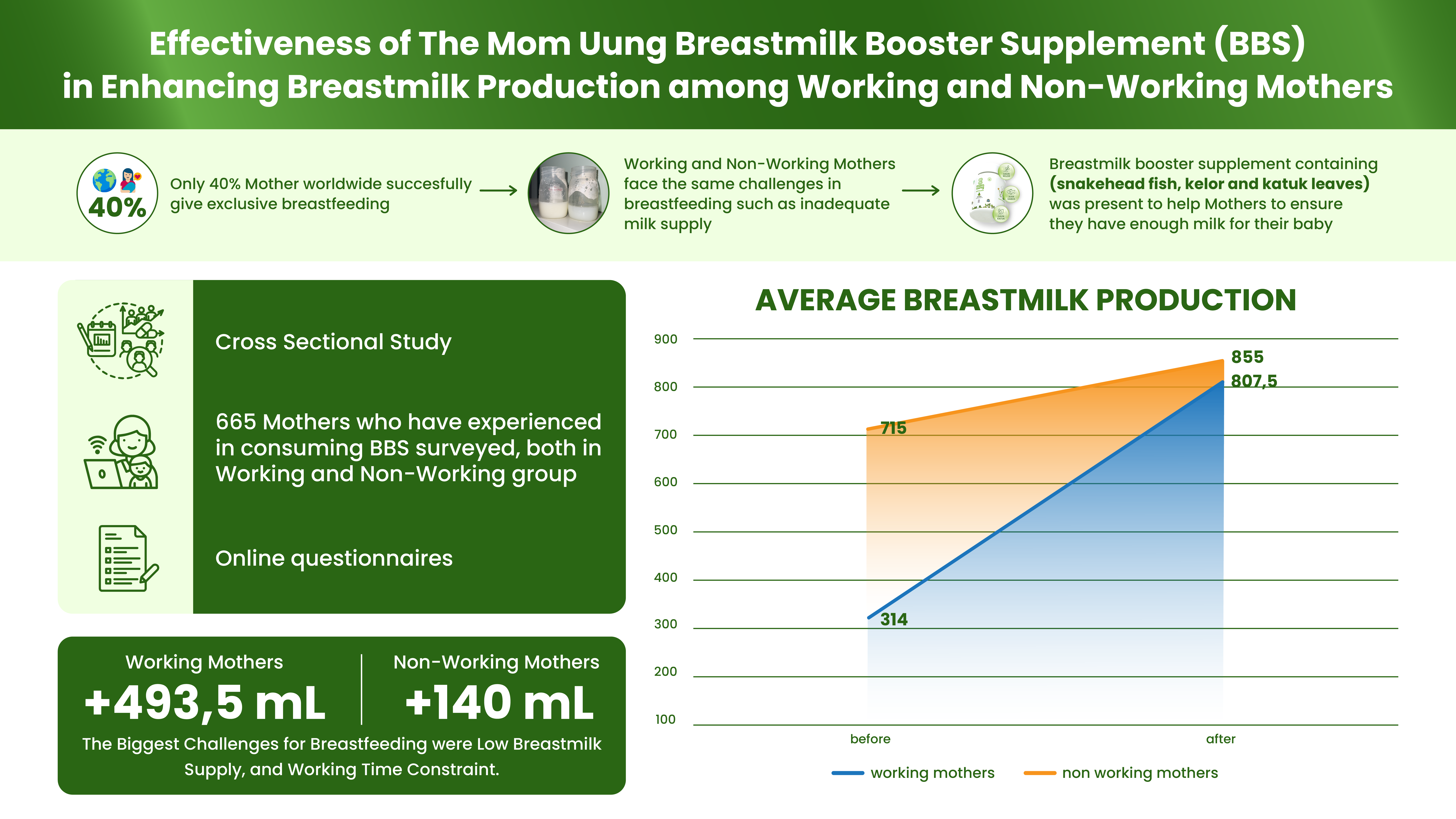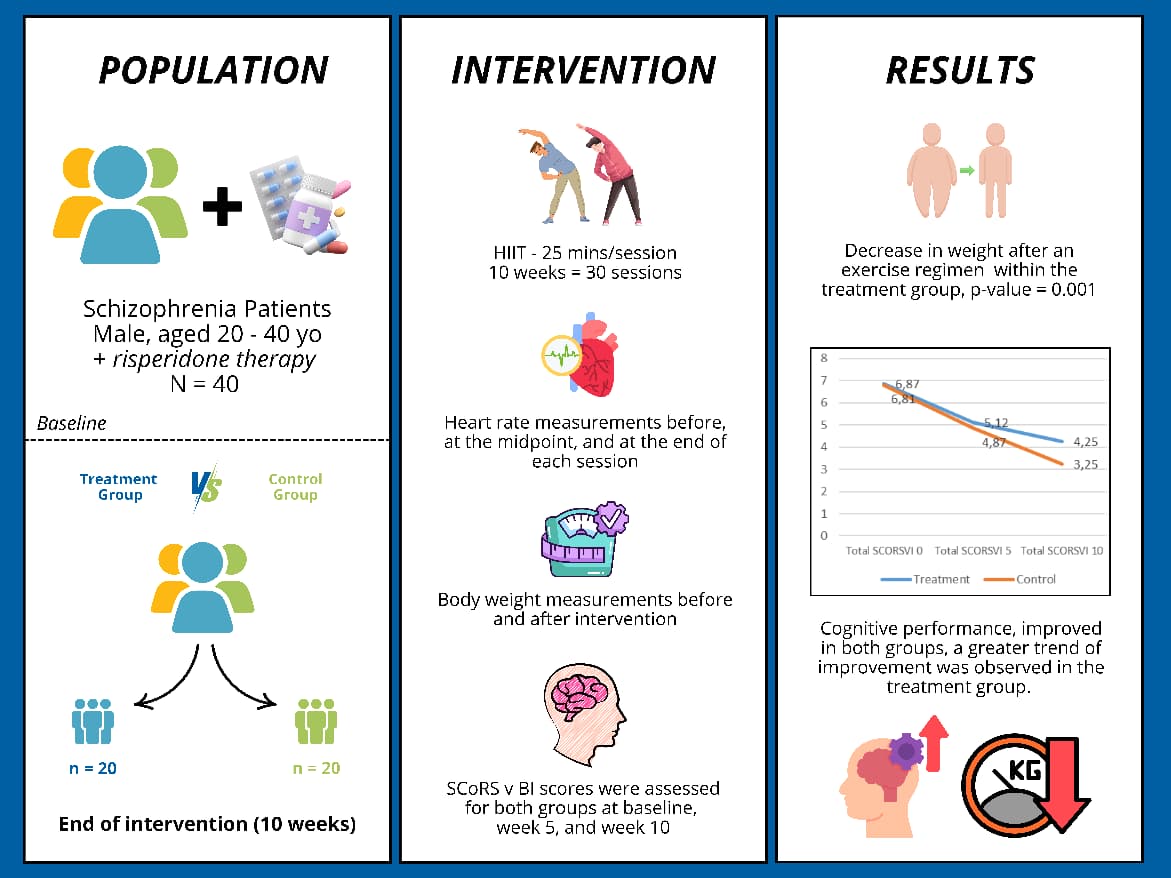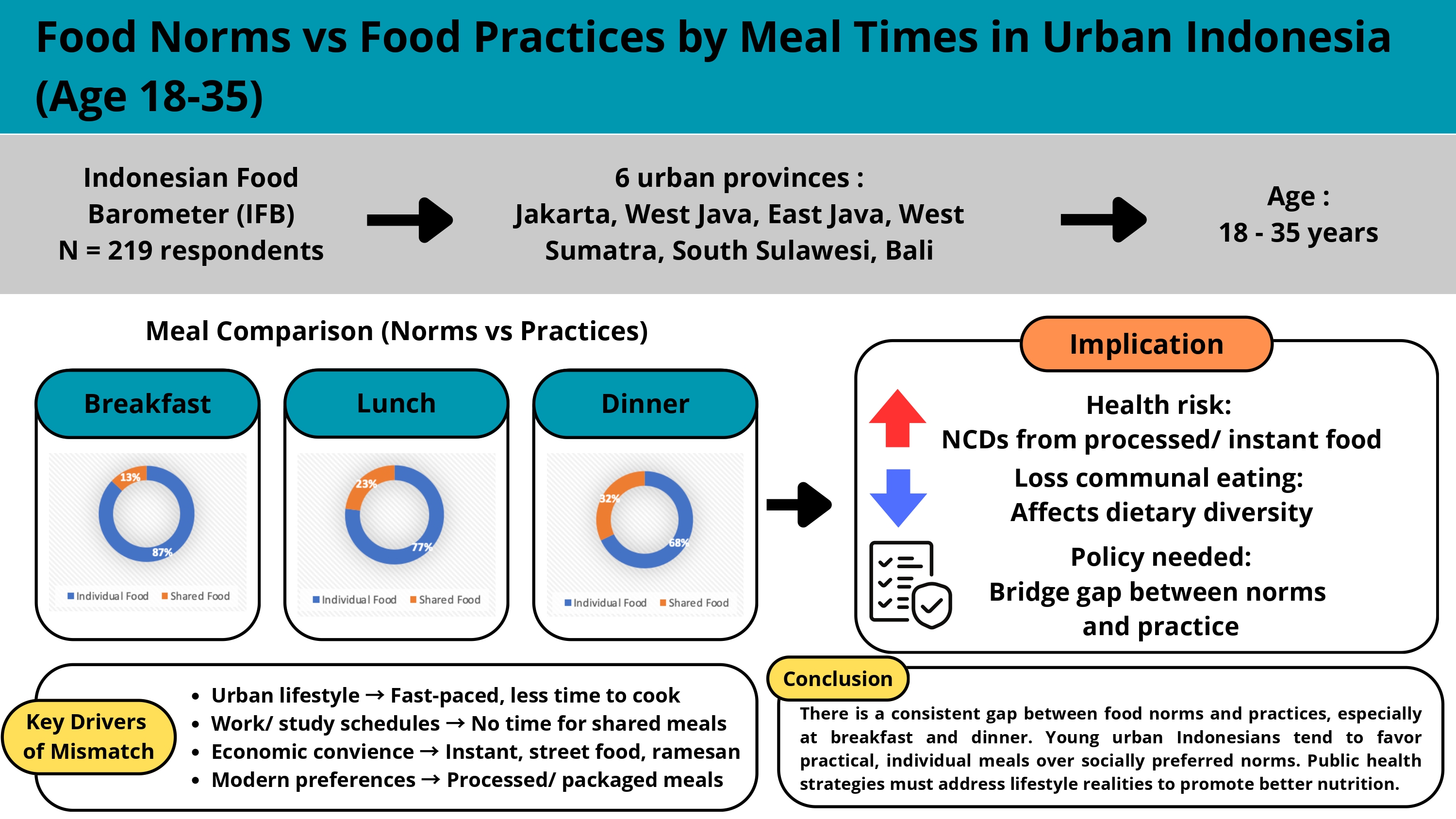THE ASSOCIATION OF FOOD FLAVOR AND APPEARANCE WITH FOOD WASTE IN HOSPITALIZED PATIENTS AT NGIMBANG LAMONGAN HOSPITAL
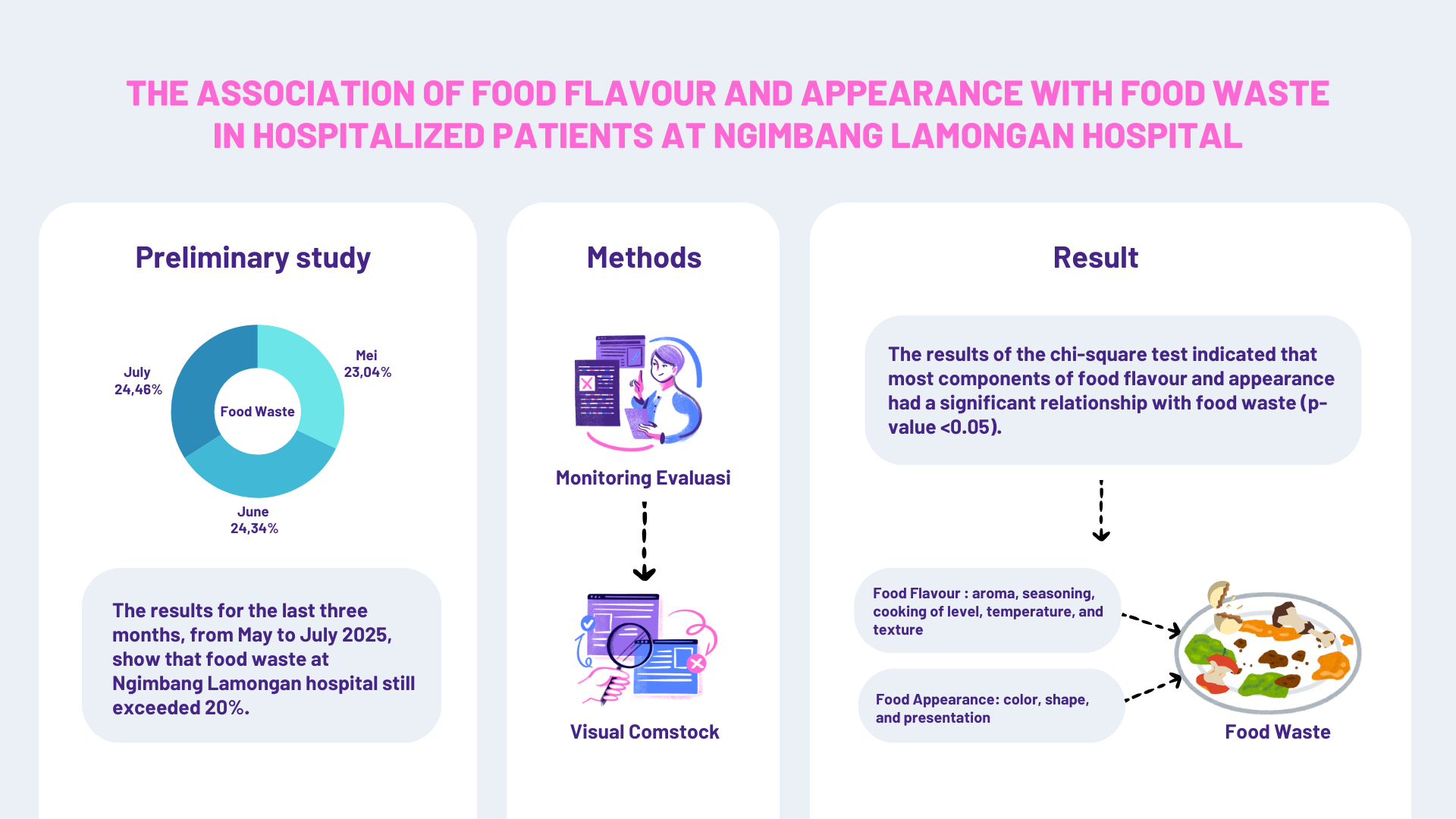
Downloads
Food waste at Ngimbang Lamongan Regional Hospital during the first semester of 2022 exceeded 20%, with the highest food waste was in May at 29.12%. Meanwhile, the results of a preliminary study in 2024 showed food waste in May was 23.04%, June 24.34%, and July 24.46%. The purpose of this study was to analyze the relationship between flavor and appearance of food and food waste among inpatients at Ngimbang Lamongan Hospital. This study used a cross-sectional approach and was conducted at Ngimbang Lamongan Hospital in August 2024 and October 2024. A total of 96 respondents were selected through purposive sampling. Data on food flavor and appearance collected through interview, while food waste measured using a visual Comstock form. Over a 10-day menu cycle, food waste average was 29.48%, with 60.42% of respondents reporting food waste exceeding 20%. The highest food waste occurred during lunch (32.36%), while staple foods being the most waste category (37.90%). The results of Chi-square test indicated that the most components of food flavor and appearance had a significant relationship with food waste (p-value <0.05). Specifically, food flavor attributes (aroma, seasoning, cooking level of the food, temperature, and texture of food) and appearance factors (color, shape, and presentation of food) were significantly associated with food waste, while portion size showed no significant relationship.
Amalia, S. E. (2020). The Influence of External Factors on Patient’s Food Waste In Hospital Cempaka Lounge Ibnu Sina Gresik. Journal of Health Science and Prevention, 4(1), 50–57. https://doi.org/10.29080/jhsp.v4i1.331
Anggraeni, D., Ronitawati, P., & Hartati, L. S. (2017). The Relationship Between Taste Preferences and Soft Food Leftovers Of Class III Patients at RSUD Berkah Pandeglang Regency. Nutrire Diaita, 9(1), 13–20.
Anggraini, K. D., & Sholichah, R. M. (2023). The Relationship Between Food Presentation Satisfaction and Food Waste of Vegetable Menu in Class III Inpatients at Kristen Mojowarno Hospital. SPIKesNas, 02(03), 775–780. https://spikesnas.khkediri.ac.id/SPIKesNas/index.php/MOO/
Christiwan, C. A., Nadhiroh, S. R., Fatmaningrum, W., Nugroho, N. T., & Rochmah, T. N. (2022). The Correlation between, Patients’ Perception of Food Taste and Menu Variation with The Covid-19 Patients’ Food Acceptance. Media Gizi Indonesia, 17(3), 330–336. https://doi.org/https://doi.org/10.204736/mgi.v17i3.330–336
Dewi, N. R. M., & Ruhana, A. (2023). Study on Food Waste and Patient Satisfaction Levels Regarding Food Service in Class III Inpatient Rooms at RSUD Gambiran Kediri City. Jurnal Gizi Universitas Negeri Surabaya, 3(4), 457–463.
Dewi, S. R., & Adriani, M. (2017). Difference Patient Satisfaction of Food by Outsourcing and Self Operated Foodservice System in RS Islam Jemursari Surabaya. Amerta Nutrition, 1(3), 209–219. https://doi.org/10.20473/amnt.v1i3.6247
Habiba, R. A., & Adriani, M. (2017). Association between Depression, Intake, and Appearance of Food with the Morning Food Waste among Inpatients (Study at the Islam Hospital Jemursari Surabaya). Amerta Nutrition, 1(3), 198–208. https://doi.org/10.20473/amnt.v1i3.2017.198-208
Hartati, Y., Telisa, I., & Siregar, A. (2022). Patient Characteristics, Preferences, Appearance, Taste, and Leftover Regular Food at Palembang City Hospital. Jurnal Pustaka Padi, 1(2), 51–56. http://jurnal.pustakagalerimandiri.co.id/index.php/pustakapadi
Lironika, A. S., & Suryadi, M. Y. (2019). The Distribution Schedule and Food Taste was Correlated with Patient’s Plate Waste at Obstetric and Surgical Room in dr. Soebandi Hospital, Jember. Amerta Nutrition, 3(3), 194–200. https://doi.org/10.20473/amnt.v3i3.2019.194-200
Ningsih, S. (2022). Analysis of Costs Wasted from Leftover Soft Food at Ibn Sina Islamic Hospital Padang City in 2021. Politeknik Kesehatan Kemenkes Padang.
Nita, M. H. D., Agung, A., & Loaloka, M. S. (2020). Evaluation of Patient Satisfaction and Analysis of Leftover Food on the Menu Served at Rsud Prof. Dr. W.Z Yohanes. Nutriology Jurnal : Pangan, Gizi, Kesehatan, 1(2), 54–59. Hospital Nutrition Services, Food Satisfaction, and Hospital Food Leftovers
Oktaviani, A., Afrinis, N., & Verawati, B. (2023). The Relationship Between Taste and Variation in Food Menu with Soft Food Waste in Inpatients at RSUD Teluk Kuantan. Jurnal Kesehatan Tambusai, 4(1), 133–147.
Purwita, N. K. D. D., Sukraniti, D. P., & Padmiari, I. A. E. (2023). The Relationship Between Taste and Food Waste in Inpatients at TK II Udayana Hospital Denpasar. Jurnal Ilmu Gizi : Journal of Nutrition Science, 12(1), 60–70. https://doi.org/10.33992/jig.v12i1.1590
Puspitasari, E., Khasanah, T. A., & Fayasari, A. (2023). Relationship Between Food Acceptability and The Amount of Leftover Food Among Patients in The Rehabilitation Room of Drug Dependence Hospital of Jakarta. Poltekita : Jurnal Ilmu Kesehatan, 17(1), 190–195. https://doi.org/10.33860/jik.v17i1.1483
Rimporok, M., Widyaningrum, K., & Satrijawati, T. (2019). Factors Affecting Food Waste Consumed by Inpatients at Permata Bunda Hospital Malang in 2019. Chmk Health Journal, 3(3), 56–61. https://doi.org/2615-1154
Setyawan, E. A., Hidayati, N., & Fitria, F. (2023). Achievement of Minimal Nutritional Service Standards at RSUD Ngimbang Lamongan. Infokes, 13(01), 581–589.
Sulistiawati, D., Dharmawati, T., & Abadi, E. (2021). The Relationship Between Food Taste and Food Waste of Inpatients at the Regional General Hospital of Kendari City. Jurnal Ilmiah Karya Kesehatan, 2(1), 72–77. https://stikesks-kendari.e-journal.id/jikk
Sumardilah, D. S. (2022). Food Leftovers Analysis of Hospital Inpatients. Jurnal Kesehatan, 13(1), 101–109. http://ejurnal.poltekkes-tjk.ac.id/index.php/JK
Wayansari, L., Anwar, I. Z., & Amri, Z. (2018). Manajemen Sistem Penyelenggaraan Makanan Institusi (p. 351).
Widi, A. L., Dewi, A. C., Sofiyatin, R., & Suranadi, L. (2020). The Influence of Food Temperature on Food Acceptability in Hospitals. Frime Nutrition Journal), 5(2), 119–124. http://jgp.poltekkes-mataram.ac.id/index.php/home

This work is licensed under a Creative Commons Attribution-NonCommercial-ShareAlike 4.0 International License.
- MEDIA GIZI INDONESIA Journal is the copyright owner of all materials published on this website.
- The formal legal provisions for access to digital articles of this electronic journal are subject to the terms of the Creative Commons Attribution-NonCommercial-ShareAlike license (CC BY-NC-SA 4.0), which means that MEDIA GIZI INDONESIA Journal and readers reserve the right to save, transmit media / format, manage in database, maintain, and publish articles as long as it continues to include the name of the Author.
- Printed and published print and electronic manuscripts are open access for educational, research and library purposes. In addition to these objectives, the editorial board shall not be liable for violations of copyright law.


2.png)















